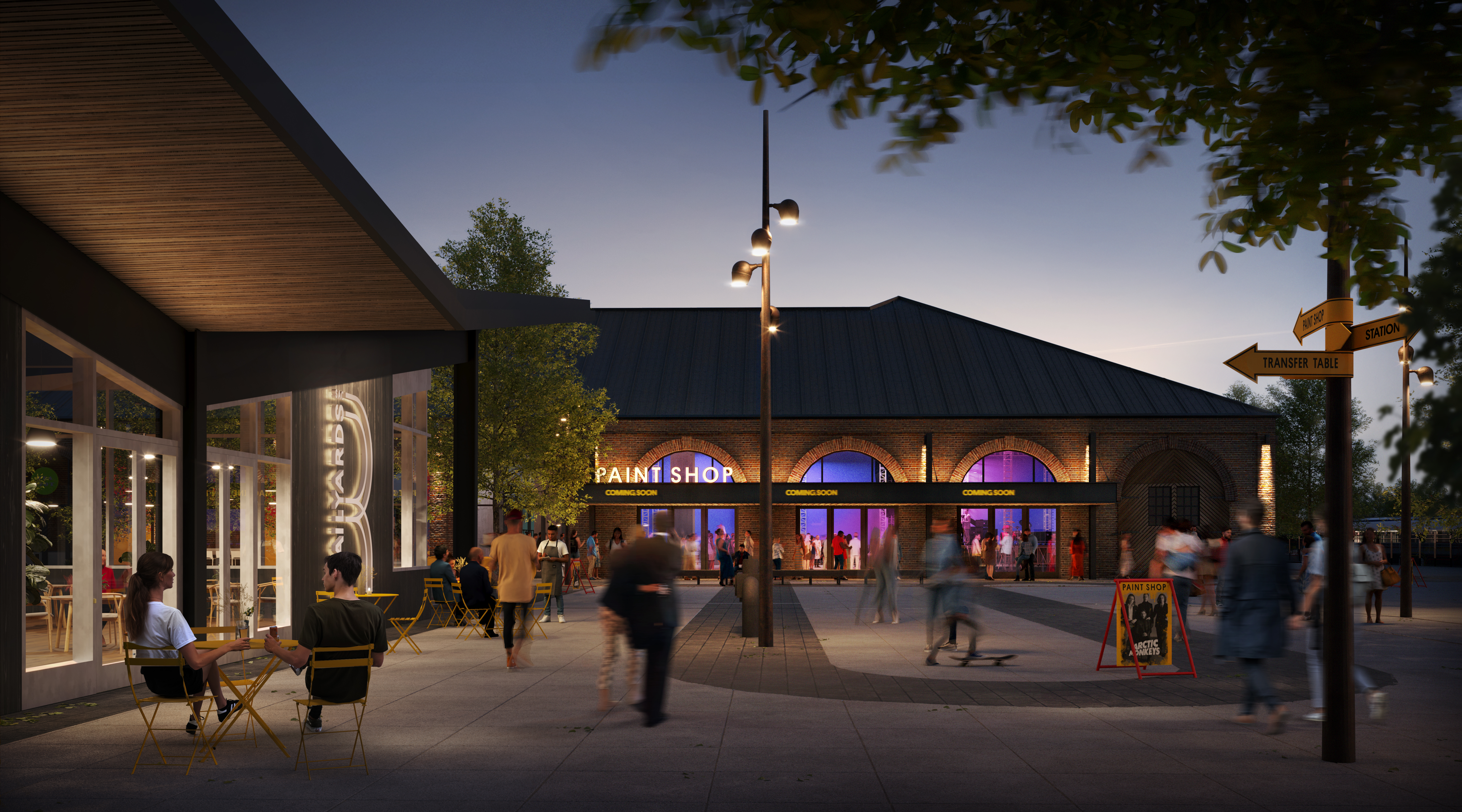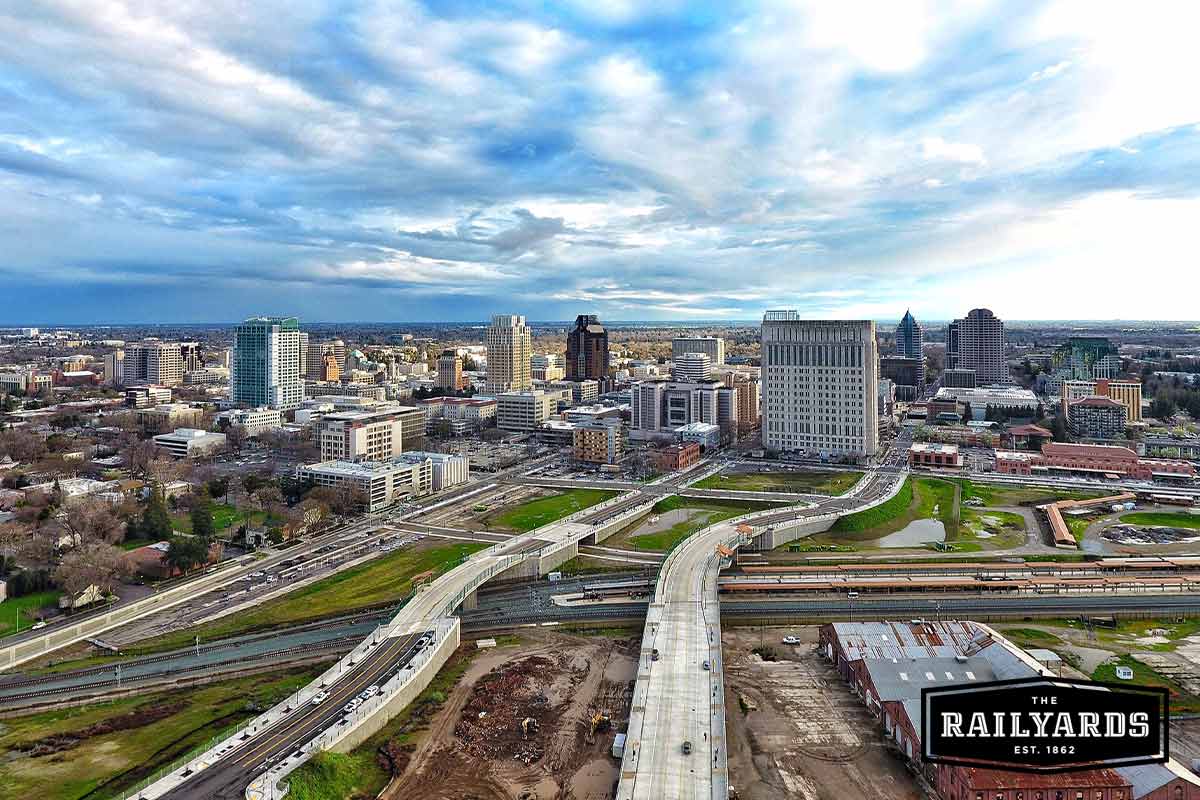
July 20, 2022 / Author: the Railyards
All aboard for a trip back in time to discover the events surrounding the rise and fall of the railroad industry in CA.
Are you a California history buff or simply curious about the events that shaped the Golden State? Either way, we’ve got you covered with our California History Timeline series. Discover how the rise and fall of the railroads shaped our state and the events leading up to today’s climate and economy in the final installment of our 3-part series.
The Rise and Fall of California’s Railroad Industry
The completion of the transcontinental railroad in 1869 permanently changed California’s economy, especially for the men who controlled this new technology.
Four ambitious Sacramento merchants, Leland Stanford (founder of Stanford University), Collis Potter Huntington, Mark Hopkins Jr., and Charles Crocker, known as The Big Four, founded the Central Pacific Railroad (CPRR) in 1861. The first rails were laid in Sacramento two years later.
Construction began in earnest in 1865 as the CPRR raced to connect to the Union Pacific Railroad under the 1862 Pacific Railroad Act that chartered the railroad companies with building a transcontinental railroad linking the Eastern and Western United States.
The completion of the transcontinental railroad cut travel for the 3,000-mile journey across the United States from a trip that could take months to one that could be completed in under a week.
That meant that goods could also be shipped cross-country, and California’s agricultural economy boomed as a result.
As the Gold Rush waned, farming became a primary economic activity in California. Farmers planted fruit, cotton, sugar beets, wheat, and vegetables. Refrigerated railcars were invented in the Sacramento railroad shops, allowing farmers to ship their goods across the country.
In the 1880s, the Southern Pacific Railroad (which had formally merged with the Central Pacific Railroad in 1959) was the largest landowner in the state. The railroad’s publicity department flooded the nation with articles and stories of California’s charm, natural beauty, climate, and heritage. The PR efforts worked, and California saw an influx of newcomers, especially in Southern California.
Up north, the railroads brought no shortage of employment opportunities to Sacramento. By 1910, 33% of all Sacramento jobs were with the Southern Pacific Railroad.
The Decline of Commuter Rail Travel Shifts CA Economy
By 1945, Americans' travel began to change forever. What had been a railroad country shifted to an automobile country, and, as more people moved to independent auto travel, it changed the shape of cities and towns.
In rail-focused towns, shopping, housing, and jobs spread out from transportation hubs. But as more people embraced automobiles, they began to sprawl out from city centers and into suburbs. Federal and state governments poured money into highways and interstates. Businesses that previously needed railway access followed, gravitating towards highways.
By 1966, less than 2% of all intercity passengers traveled by rail. Many rail companies quit, failed, or merged as a result.
The Future of California’s Economy
As rail travel declined, California’s economy shifted. In 1965, California supplanted New York as the leading state in exporting manufactured goods. By the 1970s, the development of Silicon Valley meant that California was becoming a leader in manufacturing computers and electronic devices.
By the 1990s, the state was attracting highly educated workers from all over the world. The state’s economy shifted away from manufacturing and into sectors such as professional services, film and television, art and recreation, construction, transportation, agriculture, government, education, and construction.
In Sacramento, a new economy is springing up where the original Central Pacific Railroad/ Southern Pacific shops had once been the epicenter of employment and technology in the region.
The long-deserted Sacramento Railyards area lay dormant for decades. But plans to revitalize the area are finally coming to fruition as the 244+ acre development is moving forward, bringing housing, jobs, and culture to the state’s capital.
Eight of the original railroad shop buildings are still standing. These historic buildings, built between 1868 and 1917, are being adaptively reused as the centerpiece for the Central Shops District in the Railyards development. This 500,000+ SF retail district will be home to eateries, entertainment, art galleries, museums, retail shops, and more.
Surrounding the Central Shops District, projects such as a Kaiser Permanente Medical Center, residential housing projects, commercial buildings, and affordable senior housing projects are in various stages of development.
The 244+ acre infill development project in the former location of the historic railroad will double the size of Downtown Sacramento, bringing more employment and housing opportunities to the capital of California.
Did you enjoy the 3rd installment of our California History Timelines series?
If you missed our previous posts, you’re invited to learn more about life in early California in part 1 or dive into California’s Gold Rush days in part 2. And don’t forget to discover the 6 events that changed the shape of California to learn more about the disasters and discoveries that impacted the Golden State.











